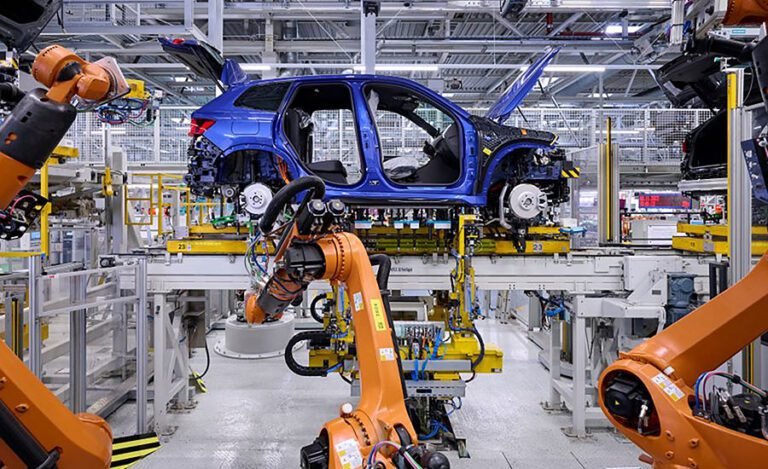Trending
OpenAI will start using AMD chips and could make its own AI hardware in 2026
In a pivotal shift in its hardware strategy, OpenAI has announced plans to incorporate AMD chips into its infrastructure, signaling a broader diversification in its approach to powering its AI models, including ChatGPT. This development comes alongside an existing collaboration with Nvidia and reflects OpenAI’s commitment to optimizing performance across its projects. With aspirations of developing its own custom AI hardware, the organization is poised to make significant advancements in the years ahead.

Strategic Collaboration with AMD and Microsoft Azure
OpenAI’s decision to utilize AMD chips is a noteworthy step that aligns with its ongoing partnership with Microsoft Azure. By integrating AMD’s technology into its existing Azure framework, OpenAI aims to enhance computational capabilities while ensuring greater flexibility and cost-effectiveness. AMD’s MI300 chips, introduced last year, represent a significant leap in the company’s data center offerings and have already garnered attention for their potential to rival Nvidia’s market dominance.
The adoption of AMD chips is not just about performance; it’s also a strategic move to mitigate risks associated with reliance on a single supplier. By broadening its hardware partnerships, OpenAI can better navigate the complexities of the AI landscape, which is characterized by rapid advancements and evolving market demands. This collaborative approach allows OpenAI to leverage the strengths of multiple hardware providers, ensuring it remains at the forefront of AI technology.
Venturing into Custom Silicon
OpenAI is also reportedly working with Broadcom to develop its own custom silicon tailored for handling large AI workloads, particularly for inference tasks. This initiative highlights OpenAI’s long-term vision of optimizing hardware specifically for its unique needs. The prospect of creating custom-designed chips signals a significant shift in how OpenAI plans to approach its computational requirements.
Securing manufacturing capacity with TSMC, a leader in semiconductor fabrication, indicates OpenAI’s commitment to producing these custom chips at scale. With a dedicated chip development team of around 20 engineers—many of whom previously contributed to Google’s Tensor processors—OpenAI is assembling a robust foundation for its hardware aspirations. This specialized team will focus on creating chips that can efficiently manage the intensive processing demands associated with advanced AI models.
However, the timeline for these custom-designed chips is ambitious, with production not expected to begin until 2026. This timeframe underscores the complexities involved in developing high-performance AI hardware and the challenges that lie ahead.
Current Landscape and Competitive Pressures
While OpenAI embarks on this journey toward custom silicon, it faces significant competition from established tech giants like Google, Microsoft, and Amazon. These companies have already made considerable investments in custom chip designs and have a few generations of hardware developments ahead of OpenAI. As these competitors continue to refine their offerings, OpenAI must navigate a landscape where technological advancements occur at a rapid pace.
Reports indicate that OpenAI had previously considered building its own network of foundries. However, those plans have reportedly been put on hold due to cost and logistical challenges. Instead, OpenAI is focusing on integrating AMD chips into its current Azure setup as an immediate solution. This approach allows the organization to benefit from AMD’s advancements while it continues to develop its longer-term strategy for custom hardware.
The decision to leverage AMD’s MI300 chips is particularly timely, as AMD has experienced substantial growth in its data center business, reportedly doubling its market share in just a year. This surge positions AMD as a formidable player in the AI hardware space, allowing OpenAI to capitalize on the company’s innovations while also competing with Nvidia’s leading offerings.
The Financial Landscape and Future Prospects
As OpenAI navigates its hardware strategy, the financial implications of developing custom silicon cannot be overlooked. Competing in the AI hardware market requires significant funding and resources, particularly as OpenAI aims to establish itself as a serious contender among tech giants. The capital needed for research, development, and production can be substantial, and OpenAI may need to seek additional funding to support its ambitions.
Investors and stakeholders will be closely watching OpenAI’s progress in this arena. The potential to create custom chips that can handle the intricate demands of AI workloads could position the organization favorably in the long term, but achieving that goal will require strategic planning and execution.
Moreover, as the AI landscape evolves, so too will the demands on hardware. OpenAI’s ability to adapt and innovate in response to these changes will be critical. The company must stay ahead of emerging trends and technologies to ensure its hardware remains relevant and competitive in a rapidly shifting market.
Industry Trends and Implications
OpenAI’s evolving hardware strategy reflects broader trends within the tech industry, where companies are increasingly exploring custom chip designs to optimize performance and manage costs. As the demand for AI capabilities continues to grow, the need for tailored hardware solutions becomes more pressing.
Tech giants have recognized that generic hardware may not meet the specific demands of advanced AI workloads. By developing custom chips, companies can create solutions that maximize efficiency and performance, ensuring they can handle the complexities of machine learning and data processing.
However, the shift towards custom silicon also raises questions about accessibility and competition. As larger companies invest heavily in proprietary hardware, smaller players may struggle to compete. OpenAI’s efforts to develop its own chips could help level the playing field, but it also underscores the necessity for ongoing innovation across the industry.






Pingback: Oracle Unveils AI-Powered Electronic Health Record System
Pingback: Apple Unveils The New MacBook Pro With M4 Family Chips
Pingback: The Future Of Quantum Computing: Potential And Applications
Pingback: Apple’s Journey Towards In-House Wi-fi Chips: What’s Next?